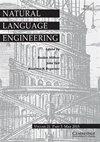Masked transformer through knowledge distillation for unsupervised text style transfer
IF 1.9
3区 计算机科学
Q3 COMPUTER SCIENCE, ARTIFICIAL INTELLIGENCE
引用次数: 0
Abstract
Text style transfer (TST) aims at automatically changing a text’s stylistic features, such as formality, sentiment, authorial style, humor, and complexity, while still trying to preserve its content. Although the scientific community has investigated TST since the 1980s, it has recently regained attention by adopting deep unsupervised strategies to address the challenge of training without parallel data. In this manuscript, we investigate how relying on sequence-to-sequence pretraining models affects the performance of TST when the pretraining step leverages pairs of paraphrase data. Furthermore, we propose a new technique to enhance the sequence-to-sequence model by distilling knowledge from masked language models. We evaluate our proposals on three unsupervised style transfer tasks with widely used benchmarks: author imitation, formality transfer, and polarity swap. The evaluation relies on quantitative and qualitative analyses and comparisons with the results of state-of-the-art models. For the author imitation and the formality transfer task, we show that using the proposed techniques improves all measured metrics and leads to state-of-the-art (SOTA) results in content preservation and an overall score in the author imitation domain. In the formality transfer domain, we paired with the SOTA method in the style control metric. Regarding the polarity swap domain, we show that the knowledge distillation component improves all measured metrics. The paraphrase pretraining increases content preservation at the expense of harming style control. Based on the results reached in these domains, we also discuss in the manuscript if the tasks we address have the same nature and should be equally treated as TST tasks.屏蔽变压器通过知识升华实现无监督文本样式转移
文本风格转换(TST)旨在自动改变文本的风格特征,如形式、情感、作者风格、幽默和复杂性,同时仍尽量保留其内容。虽然科学界自20世纪80年代以来一直在研究TST,但最近通过采用深度无监督策略来解决无并行数据训练的挑战,它重新获得了关注。在本文中,我们研究了当预训练步骤利用对意译数据时,依赖序列到序列的预训练模型如何影响TST的性能。此外,我们提出了一种新的技术,通过从屏蔽语言模型中提取知识来增强序列到序列模型。我们在三个无监督风格迁移任务中评估了我们的建议,这些任务使用了广泛使用的基准:作者模仿、形式转换和极性交换。评估依赖于定量和定性分析,并与最先进模型的结果进行比较。对于作者模仿和形式转换任务,我们表明使用所提出的技术改进了所有测量指标,并导致了最先进的(SOTA)结果,内容保存和作者模仿领域的总分。在形式转换领域,我们在风格控制度量中与SOTA方法配对。对于极性交换领域,我们证明了知识蒸馏组件改善了所有测量指标。意译预训练以损害风格控制为代价增加了内容保存。基于这些领域的结果,我们还在手稿中讨论了我们所处理的任务是否具有相同的性质,是否应该平等地视为TST任务。
本文章由计算机程序翻译,如有差异,请以英文原文为准。
求助全文
约1分钟内获得全文
求助全文
来源期刊

Natural Language Engineering
COMPUTER SCIENCE, ARTIFICIAL INTELLIGENCE-
CiteScore
5.90
自引率
12.00%
发文量
60
审稿时长
>12 weeks
期刊介绍:
Natural Language Engineering meets the needs of professionals and researchers working in all areas of computerised language processing, whether from the perspective of theoretical or descriptive linguistics, lexicology, computer science or engineering. Its aim is to bridge the gap between traditional computational linguistics research and the implementation of practical applications with potential real-world use. As well as publishing research articles on a broad range of topics - from text analysis, machine translation, information retrieval and speech analysis and generation to integrated systems and multi modal interfaces - it also publishes special issues on specific areas and technologies within these topics, an industry watch column and book reviews.
 求助内容:
求助内容: 应助结果提醒方式:
应助结果提醒方式:


